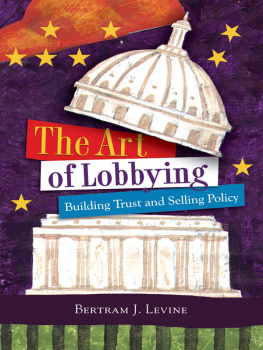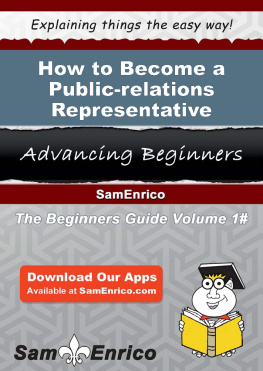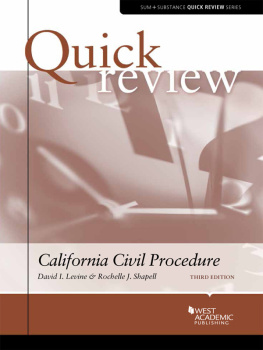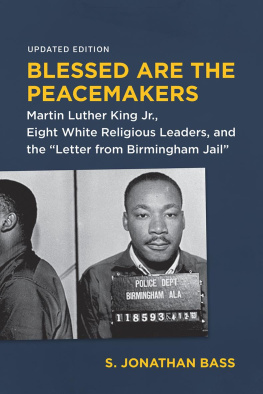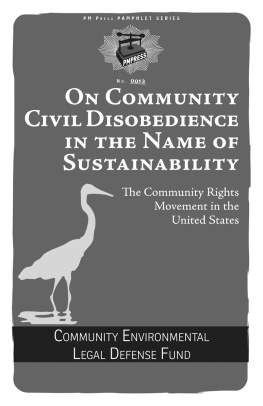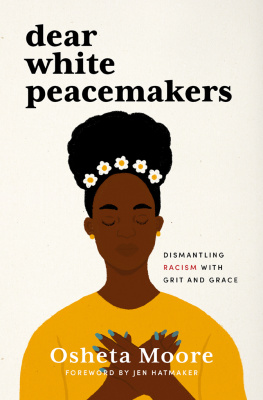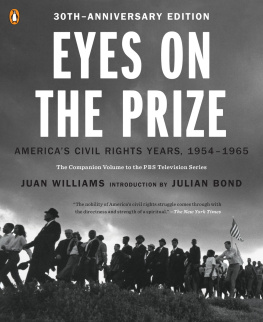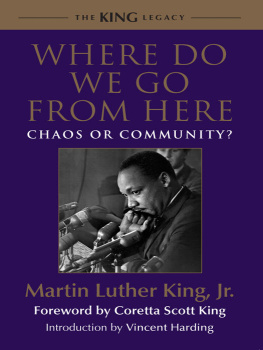Copyright 2020 by The Curators of the University of Missouri
University of Missouri Press, Columbia, Missouri 65211
Printed and bound in the United States of America
All rights reserved. First printing, 2020.
Library of Congress Cataloging-in-Publication Data
Names: Levine, Bertram J., author. | Lum, Grande, author.
Title: Americas peacemakers : the community relations service and Civil Rights / by Bertram Levine, and Grande Lum.
Other titles: Community relations service and Civil Rights
Description: New edition. | Columbia : University of Missouri Press, [2020] | A new edition of Resolving Racial Conflict. | Includes bibliographical references and index.
Identifiers: LCCN 2020019504 (print) | LCCN 2020019505 (ebook) | ISBN 9780826222169 (hardcover) | ISBN 9780826274519 (ebook)
Subjects: LCSH: United States. Community Relations Service--History. | United States--Race relations. | United States--Ethnic relations. | United States. Civil Rights Act of 1964. | Race discrimination--United States--History--20th century. | Race discrimination--United States--History--21st century. | Civil rights--United States--History--20th century. | Discrimination--United States--History--20th century. | Civil rights--United States--History--21st century. | Discrimination--United States--History--21st century.
Classification: LCC E184.A1 L467 2020 (print) | LCC E184.A1 (ebook) | DDC 323.1196/073/009045--dc23
LC record available at https://lccn.loc.gov/2020019504
LC ebook record available at https://lccn.loc.gov/2020019505

This paper meets the requirements of the American National Standard for Permanence of Paper for Printed Library Materials, Z39.48, 1984.
Acknowledgment of permissions for this volume appears on page
Typefaces: ITC Galliard Pro and Mr Eaves Modern
First Edition (Bertram Levine)
To Muriel
Who decorated my life
New Edition (Grande Lum)
In Gratitude to Bertram Levines children: Neil, David, and Susan Rae
In a time of unnecessary trouble and disorder, the members of CRS had the capacity and courage to cool the tensions of a Nation. You helped to bring order where there would have been chaos. You helped bring peace where violence would have ruled the day.
On behalf of a grateful Nation, on behalf of a grateful people, on behalf of those who gave all they had in this fight, I stand here to say thank you for all that you did to help to get us to where we are today.
As a Nation, we are deeply indebted to the Community Relations Service at the Department of Justice for helping to create a more perfect Union. I say to each and every one of you who continue to work at CRS, never give up. Never give in. Keep the faith. Keep your eyes on the prize. We are going to build a beloved nation.
Congressman John Lewis at CRSs Forty-Fifth Anniversary, 2009
FOREWORD
NONVIOLENCE, CONFLICT RESOLUTION, AND SOCIAL JUSTICE
THE LANDMARK CIVIL Rights of Act of 1964 is most known for its historic legislative enshrinement of civil rights, something African Americans struggled for centuries to achieve. Lesser known than the more publicly celebrated sections of the act is Title X, creating the Community Relations Service (CRS).
Bertram Levine and Grande Lum have written a compelling book describing more than five decades of service. The authors work is a must read for anyone who seeks a better understanding of the historic magnitude of what the act sought to redress and achieve. It provides insight into the value of nonviolent negotiation of what could otherwise, in the absence of such negotiation, become instances of violence and setbacks to the intent of the act. In summary, the book is about over fifty years of racial conflict in America, and what was done by federal conciliators to help resolve it.
As the former political adviser, personal lawyer, and draft speechwriter for Dr. Martin Luther King Jr., I am honored that former CRS director Grande Lum asked me to write a foreword to what is a superb new edition of this book about the operation of CRS created under the Civil Rights Act of 1964. I feel especially so given the deep polarization in this country in 2020 and the need for conflict resolution experts to aid in the cause of social justice. Since Levines book covered CRSs history up until 1989, it is particularly important to shed light on CRSs amazing work since then, which includes:
throughout the country post-9/11, preventing backlash violence against innocent people targeted by xenophobic racists;
in Miami, a valiant attempt to create a peaceful handover of Elin Gonzlez from his Florida relatives to his Cuban father;
in Ovett, Mississippi, mediating after local residents harassed occupants at Camp Sister Spirit, a lesbian retreat center;
throughout the South, helping to protect African American churches from arson following President Bill Clintons signing of the 1996 Church Arson Prevention Act;
in Sanford, Florida, easing tensions after the tragic 2012 killing of Trayvon Martin, where the states Stand Your Ground law enabled violence with a Get Out of Jail Free card;
and in Oak Creek, Wisconsin, in 2012, enhancing communication after a white supremacist entered a Sikh gurdwara and murdered six congregants.
Grandes focus on CRSs work from 1990 forward adds to how we think about how American society has evolved as a whole in terms of civil rights. What is striking is that as other minority groupswhether Native American, Hispanic, Muslim, LGBTQ, or Asian Americanincreased their civil rights advocacy, they also began utilizing CRS, especially when the situation involved governmental actors. The Matthew Shepard and James Byrd Jr. Hate Crimes Prevention Act opened up CRSs ability to work in situations beyond race for the first time, mirroring the changes in the country as a whole.
Neither the author of the first edition, Bertram Levine, nor anyone working on civil rights immediately after the assassination of President John F. Kennedy on November 22, 1963, could have known that this event would result in Martin Luther King developing what may have been the most important strategic decision during his leadership of the civil rights movement: that there would be no major material improvement on the issue of race in the United States unless it occurred under the political leadership of a white, southern political leader. A description of the genesis of this political thesis by Dr. King is described in greater detail in my own forthcoming memoirs.
Just what role does nonviolent conflict resolution play when conflict resolution and civil rights programs enacted under the Civil Rights Act end up at cross-purposes? This is one of the challenging issues Levine and Lum bring to our attention. One of the most profound and prescient observations from Levine is that from its earliest days, it was apparent to CRSs leaders that the roots of racial animosity lay deep beneath the surface of American society.
This seems to be right on the money with the issues that our countrys political leaders are confronting today. For example, in competing for the Democratic Partys nomination to prevent President Donald Trumps reelection, former vice president Joe Biden has faced challenges to his civil rights credentials because when he was a senator, he worked with segregationists from the South to enact various pieces of legislation, including civil rights, during his more than thirty-five years in the Senate. This is exactly what President Lyndon Johnson had to do to enable the successful passage of the Civil Rights Act of 1964.


 This paper meets the requirements of the American National Standard for Permanence of Paper for Printed Library Materials, Z39.48, 1984.
This paper meets the requirements of the American National Standard for Permanence of Paper for Printed Library Materials, Z39.48, 1984.
